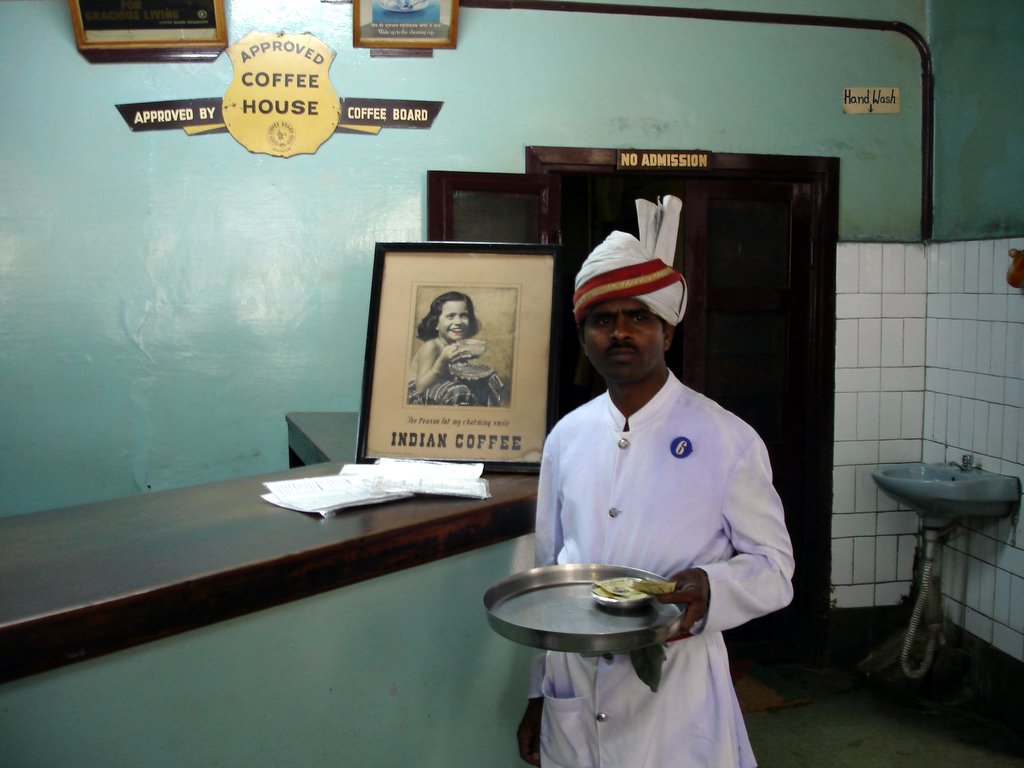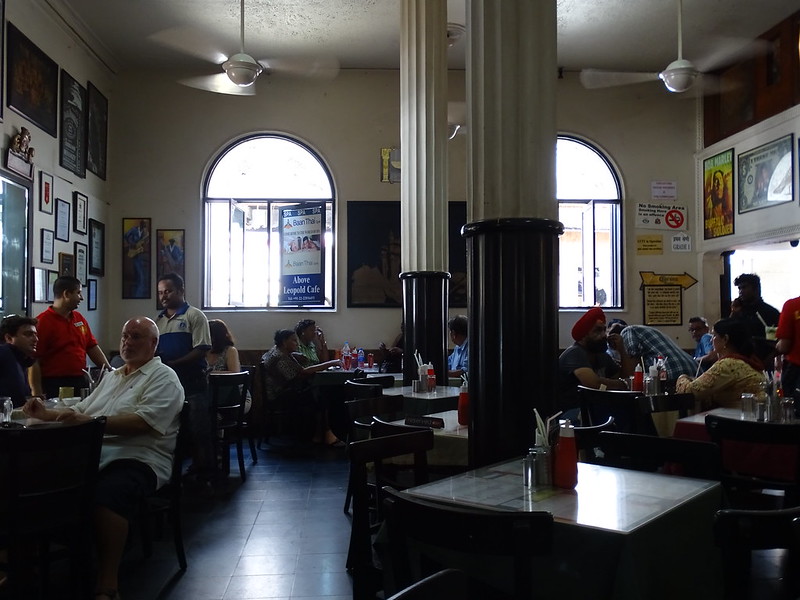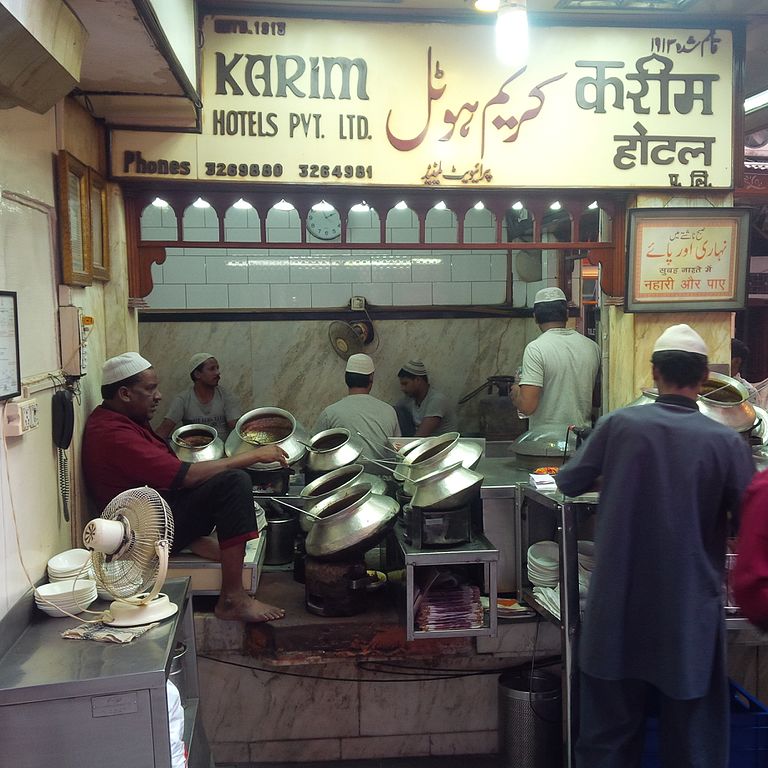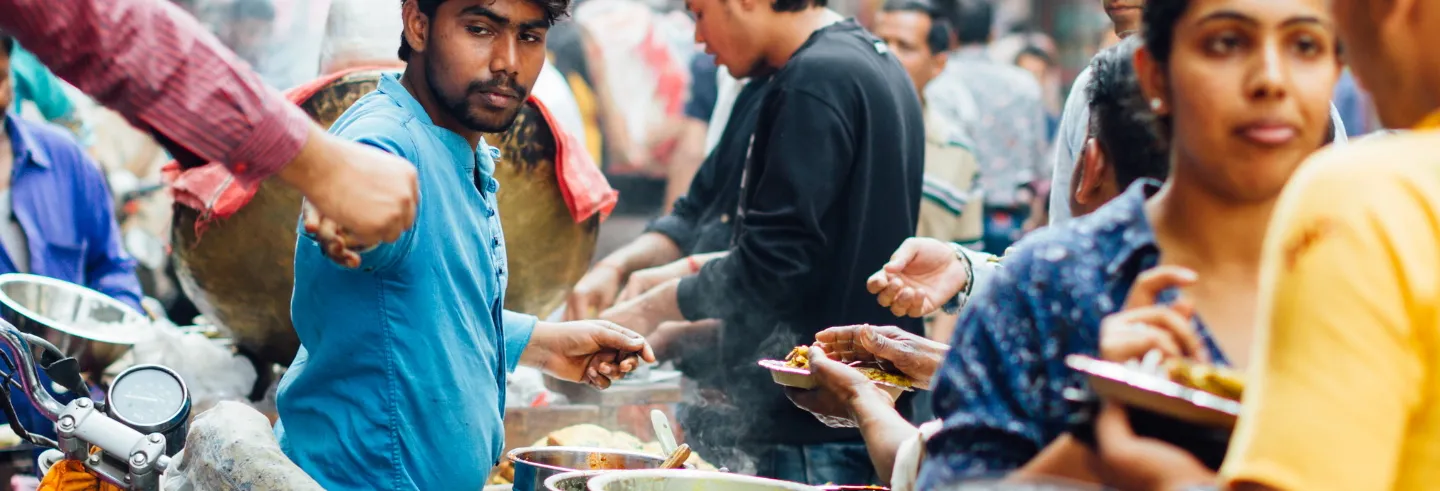An integral part of the story of India since 1947 is the phenomenon of eating out. The eating patterns of Indians have been formed on an enlarged terrain of food consumption that extends beyond the hearth and home. Eating out does not signal a diminished significance of eating food prepared at home; or a substitution of “eating in” by “eating out”. Nor does it herald an evaporation of the caste and religion-specific aspects of food preparation consumption.
Eating out is not about eating prasad or langar within the precincts of temples; or partaking of communal charity meals or packed home food on picnics under the open sky or at wedding feasts, meals on trains; or having a meal in the middle of the day in a wheat field or sipping the last dregs from a trashed can of Coke at traffic signals. Instead, it calls attention to the growing number of instances of Indians across social and economic groups routinely consuming food in commercial establishments—in restaurants, highway dhabas, hotels, cafes, bars, roadside eateries; or by roadside pavements; or from food vans, tea stalls, fruit juice carts, or noodle shacks.
Earlier, in the vanguard of eating out in India were the rich elite and the poor at two opposite ends of the socio-economic spectrum—the one due to social desire and the other due to economic necessity.
Eating out in India is a saga of people moving out of their homes—and food following suit. It maps the historical movements of people under conditions of colonisation, the rise of nation states, urbanisation, industrialisation, and voluntary or forced migrations. For instance, in India, western-style hotels with fine dining facilities such as the Great Eastern in Calcutta, Watson’s Hotel in Bombay, Clarkes Hotel in Shimla, and the Imperial in New Delhi were built for European visitors and colonial government officials; Mumbai’s Irani cafes hark back to the immigration of the Zoroastrians from Persia. The contemporary street food culture of Old Delhi is the joint legacy of Mughal rule and subsequent migrations that facilitated the intermingling of the Muslim and non-Muslim populations. Delhi’s eating out culture bears the fingerprints of the post-Partition refugees from west Punjab.
A host of pre-independence eateries such as Nizam’s, India Coffee House, and Flury’s in present-day Kolkata; Café Leopold, Britannia & Co, and Madras Café in Mumbai; Karim’s, Kwality, United Coffee House, and Wenger’s in Delhi; Dorabjee & Sons, Vaidya Uphar Gruha, and Café Goodluck in Pune; Mavalli Tiffin Room in Bengaluru; the luxury restaurants in the Taj and Oberoi hotels; and countless nameless small food shops were all forerunners of India’s eating out culture today.

Earlier, in the vanguard of eating out in India were the rich elite and the poor at two opposite ends of the socio-economic spectrum—the one due to social desire and the other due to economic necessity. To the former, exposed to the western lifestyle of the British in India, eating out meant socialising, celebrating family occasions, or outings for pleasure. In stark contrast, the poor, for example, the refugees in Delhi or male migrant industrial workers in the Bombay of the time, were driven to procuring food commercially because of necessity.
Post-independence, Prime Minister Jawaharlal Nehru’s programme to modernise and internationalise India was launched on the planks of industrialisation, urbanisation, and planned development of cities. Urbanisation entailed commercialisation, the setting up of business enterprises, shopping streets, and recreation and leisure facilities, all of which gave impetus to building hotels and restaurants. A notable example of independent India’s bid for a place in the international order was the building, under the supervision of Nehru, of the Ashok Hotel in Delhi (1956) for hosting UNESCO’s ninth convention.
Managed by coffee workers’ co-operatives, which had been formed with the encouragement of A.K. Gopalan, a senior leader of the then Communist Party of India, the mass appeal of the Indian Coffee House, materialised the principles of socialism enshrined in the Indian Constitution.
In the first two decades following Independence, the rich ate out with growing gusto. In course of time, the middle-level social groups comprising successful entrepreneurs, businessmen, urban professional groups, and high-ranking government officials took to this practice. In the national capital, there are legions of examples of family rituals—the lure and charm of going to Connaught Place for movies or coffee, or to India Gate for ice-cream—becoming high points in the lives of the educated middle classes.
A different kind of social group comprising intellectuals, artists, government employees, journalists, and students assembled around tables of Indian coffee and south Indian snacks at the Indian Coffee House. Managed by coffee workers’ co-operatives, which had been formed with the encouragement of A.K. Gopalan, a senior leader of the then Communist Party of India, the mass appeal of the Indian Coffee House materialised the principles of socialism enshrined in the Constitution. Significantly, during the Emergency the New Delhi branch of the Indian Coffee House was shut down by the government in 1975.

The 1980s began a period of rapid growth. With the arrival of colour television and the founding of the National Restaurant Association of India and the National Council for Hotel Management and Catering Technology, eating out in India acquired the connotation of “culinary tourism”. The tourism and travel features in the print and visual media, food writing, and travelogues tickled the taste buds of the adventurous by displaying local, national, and global cuisines as “food places”—Italian food stood for Italy, and pizza was a “slice of Italy”. The process of consolidating the middle-class base of eating out was set in motion by the increasing number of women entering salaried professions and the growing acceptance of the two-child family norm.
Since the restructuring of the economy in the 1990s, several global eateries have set shop in urban India. A distinctive feature of these is the provision of non-food services—with free access to Wi-Fi facilities, they double up as makeshift conference (virtual or in-person) venues for young professionals and students. In collaboration with food experts and celebrity chefs, sponsored food programmes set standards through restaurant ratings. Mechanisms of feedback are used to “educate” clients in customer expectations of an overall dining experience—a pleasing ambience, efficient and polite service personnel, and cleanliness.
To those at the threshold of a bare or minimum existence, eating out continues to be about subsistence and necessity, with a rare dip into the available variety. Its place is a random stall, shop, cart, or street.
In India@75, in principle, everyone has access to eating out. But it means different things to different sections of society. To the rich, extravagant expenditure on eating out is an integral part of luxurious living, entertaining, and socialising. Instead of settling for an Italian pizza in India, they would rather take a tour of Italy for an authentic culinary experience. To the multiple fractions of the middle classes, eating out offers a global, modern lifestyle, all in a package. Besides buying occasional convenience, respite, and leisure, it is the investment of a small portion of one’s disposable income in something “more” than food. The more is the feel-good aspect of partaking in a modern experience, exercising “buying power”, and nostalgia-making. This engenders a sense of distinction vis-à-vis those who are below, and it also is a strategy of “catching up” with those above. The aspirational motive of moving up the status ladder through consumption is vital for understanding the middle-class bulge in eating out.
To those at the threshold of a bare or minimum existence, eating out continues to be about subsistence and necessity, with a rare dip into the available variety. Its place is a random stall, shop, cart, or street. It is also an arena they inhabit as labourers eking out a living and struggling to survive. “More than food” or “customer expectations” are a far cry from the poor person’s “meal minimum”.
The forms and patterns of eating out reflect the social divisions and differentiation of Indian society along the lines of caste, ethnicity, community, gender, age, and profession. For instance, women’s access to eateries and their frequency of eating out is dependent on the type of establishment, time of the day, and company. Professionals of the IT industry are attuned and exposed to cosmopolitan eating cultures and global cuisines. Young people prefer informal, “chilled out” and vibrant settings. And some eateries have signage to disseminate information about the caste or community credentials of the proprietors to customers who want it.
The newest chapter in the story of eating out then is how its lure has created the conditions for its very reversal—that is, the coming home of outside food via home deliveries..
Diverse types of eating establishments such as standalone bars, cafés, food courts, and food plazas are used variously by customers. While the customer base of food courts and plazas is families and larger groups, the cafés are turning out to be haunts for young people to intermingle. In this way, customers convert eating out into an occasion for exploring and initiating non-familial social relations. In the present, as in the past, restaurants continue to be sought after meeting venues by families of prospective brides and grooms.

The diversification and dynamism of the customer base of those eating out is matched by a proliferation in the variety of foods on offer. Continental, North Indian, South Indian, Mughalai, and Chinese do not anymore describe the variety. There is now a remarkable diversity of national, regional, ethnic, local, global, and industrial elements in the hamper comprising Tibetan, Italian, Afghani, Lebanese, Korean, Japanese, Bengali, Kashmiri, Gujarati, Goan, Maharashtrian, Rajasthani, North-Eastern, and Punjabi cuisines; branded/unbranded and homegrown/American fast food; pan-Indian, regional, and local varieties of snacks and sweets; vegan or organic food; and tea, coffee and pastries. Food items such as samosas, vada-pao, chutney sandwiches, pav bhaji, golegappe, chaat, kathi rolls, chole bhature, bhelpuri, idli, dhokla, kachori, bread pakora, sambhar-vada, patties, burgers, noodles, biryani, and kebabs map the diversity of street foods.
The partaking of this array of foods is a characteristic of the urban upper and middle classes. On the pan-Indian class registers, variety is restricted to “indigenised” Chinese, Mughalai, and local and regional street foods.
Over and above the conventional jobs of cook, helper and waiter, home delivery of food has emerged as a new source of subsistence for many Indians. The newest chapter in the story of eating out then is how its lure has created the conditions for its very reversal—that is, the coming home of outside food via home deliveries. The pandemic diaries bear this out.
Anjali Bhatia teaches Sociology at Lady Shri Ram College for Women, University of Delhi.









